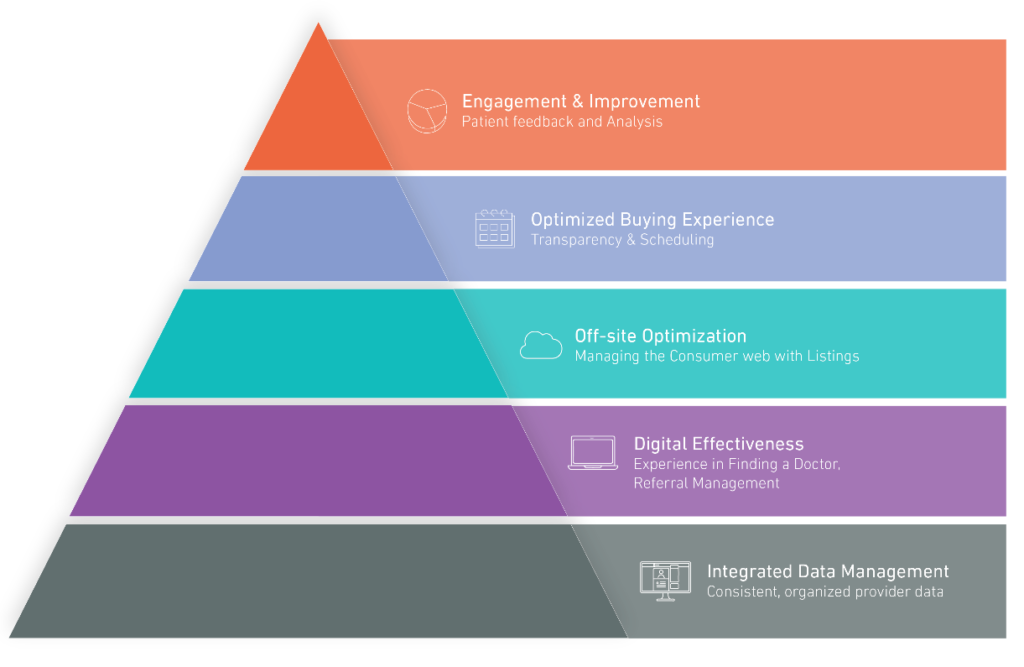Where is your organization on the healthcare hierarchy of needs?
Doctor.com, inspired by Abraham Maslow’s classic theory of motivation illustrated by a triangular hierarchy of needs, has created a similar framework for healthcare organizations. Through our experience working with hundreds of hospital systems across the US over the years, we’ve learned that some things, like having organized, consistent data or a functional find-a-doctor solution, must be in place before others can be successfully accomplished, such as a transparency initiative or integrated scheduling mechanisms. It looks like this:

The origin of the pyramid
When Maslow created his hierarchy of needs in 1943, he was using it to explain human motivation. People are motivated to achieve all kinds of things, but depending on a person’s physical and emotional well-being, some needs must take precedence over others before they can be addressed.

Our most basic need is for physical survival, and this will be the first thing that motivates our behavior. Once that level is fulfilled the next level up is what motivates us, and so on. A perfect example of this is that a person struggling to figure out where their next meal is coming from isn’t going to worry about finding true love as much as someone settled with a house and a great job.
Applying motivation to healthcare organizations
This same framework for motivation can also be useful for healthcare organizations. Operations at a hospital has to have a way to know what providers it has access to, what they do and how to get patients to them before they can look at higher needs like being transparent. But once this need is being met, the organization is freed to ascend much more easily from good to great.
Our pyramid has as its base Integrated Data Management, without which no digital marketing or patient experience strategy can be effectively and efficiently deployed. As you move up the chain, the offerings get more complex as the organization focuses outward on advanced engagement tactics like online scheduling and optimized listings management.
Finally, the top of the pyramid turns back inward as the organization use the information it’s gathered from patient surveys to gain insight, make adjustments, and take steps toward improvement.
At Doctor.com, we understand that every healthcare system is on its own journey, with differing needs and unique issues to resolve. No matter where you are on the hierarchy pyramid, our team can help you create a better patient experience.
Visit doctor.com/enterprise to learn more about our solutions and how they can help your organization reach its full potential.